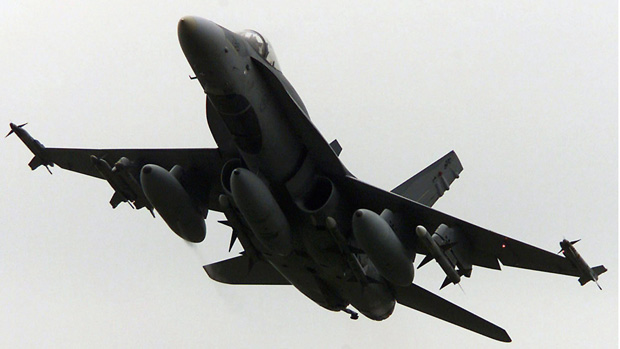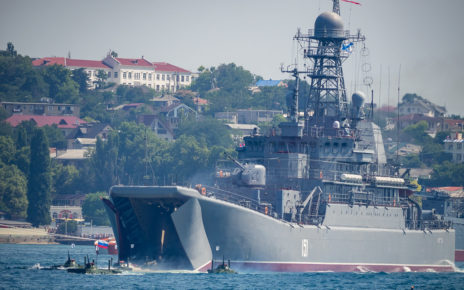[captionpix align=”left” theme=”elegant” width=”320″ imgsrc=” http://media.monstersandcritics.com/galleries/2872575_34156/0265674755085.jpg ” captiontext=” The NATO-imposed no-fly zone over Libya was regarded as a tactical success, but could it be repeated in Syria?.”]
The never-ending flow of Tweets, YouTube posts, Facebook updates, and on-the-ground reporting coming out of Syria has diplomats and pundits debating the possible course of action on what is now a year old civil conflict in Syria. Eric Morse poignantly observes that the ‘twitterverse does not dispel the fog of war’, a modern maxim made glaringly obvious as we watch yet another supposed turning point in this war unfold. As rebels, generals, diplomats, and pundits all hail the current battle of Aleppo as the mother of all battles, one cannot but help look on with skepticism and recall that weeks earlier, Damascus was also the symbolic breaking point of this conflict. Benignly optimistic, I do think these predictions are hopeful, so call me a ‘glass-half-emptyist’ when I say that this war will rage on until some form of intervention tips the awkward balance of power between a ruthless regime and an increasingly emboldened opposition.
Were an intervention to occur, the most likely of all scenarios would be a no-fly zone air campaign. Following talks between the Turkish and American state departments earlier this month, leaders of the Syrian opposition have once again called on the US to back a no-fly zone over Syrian air space. Addressing these calls, US Secretary of State Hillary Clinton stressed the need for intense operational and feasibility analyses to be conducted before a no-fly zone is operationalized. As of late, this option has been gaining traction throughout Western think tanks and policy circles and would almost certainly be bolstered by humanitarian corridors or safe zones along the Turkish and Jordanian borders with Syrian. Critics and supporters alike generally tend to agree as to the strategic effectiveness of no-fly zones, though discord gravitates around their legality and hence lead to arguments regarding sanctioned versus unsanctioned interventions. Precedents exist on both sides of the legal debate, making the decision to implement a no-fly zone that much more difficult.
What is a No-Fly Zone?
As the name would suggest, a no-fly zone is a cordoned off sector of air space within which air-traffic is severely limited and sanctioned. Often conceived of in militaristic terms, some of the most protected geographical spaces on the planet are in fact secured by internationally recognized no-fly zones. The White House, The Taj Mahal, and Buckingham Palace are among internationally recognized no-fly air space. The imposition of a no-fly zone during a civil conflict such as that in Syria is usually implemented to halt an aerial assault campaign against civilian populations by a despotic government and would effectively constitute the “occupation” of Syria’s sovereign airspace. In Syria, a no-fly zone would require first neutralizing the unabashedly formidable Syrian air force and disabling its Russian-supplied surface to air defence systems. Once achieved, the international community must enforce the sanction by patrolling, policing, and regulating air traffic within that space. This extended constabulary presence requires the establishment of nearby support systems such as tankers, air bases, and frigates for refueling and staging purposes. Once achieved, no-fly zones usually require some measure of boots-on-ground presence to effectively halt the military operations of, in this case, the Assad regime.
Case For No-Fly:
The most immediate example supporting the implementation of a no-fly zone against Syria is the Libyan air campaign conducted last year. On March 17, 2011 the UN Security Council (UNSC) adopted Resolution 1973, which implemented a “ban on all flights in the airspace of the Libyan Arab Jamahiriya in order to help protect civilians” with exceptions being sanctioned by the UNSC. Pursuant to the ban on air-traffic inside Libyan air space, the Security Council further authorized “member states…to take all necessary measures to enforce compliance” whereby necessary measures usually refers to military action.
In the Libyan case, member countries to the resolution could choose act as part of an ad hoc coalition, or through a regional organization like NATO to exact the terms of the resolution. In this instance, fourteen member states and four partners acted under the NATO framework, which provided the established command structure necessary for conducting an air campaign of this complexity. According to the international codified law, Resolution 1973 (Libya) and a no-fly zone such as that being called for in Syria is permissible under Chapter VII of the UN Charter, which identifies a “threat to peace, breach of the peace, or act of aggression” as reasonable grounds for violating sovereign air space. Without Chapter VII recognition, a no-fly zone would constitute an unlawful use of force against Syria – contrary to Article 2(4) of the UN Charter.
As far as a Syrian no-fly zone is concerned, most advocates refer to the success of the Libyan air campaign as a precedent (and indeed a blueprint) for intervention in Syria and despite marked differences in air defense capabilities, the operational metrics remain starkly similar. In Syria, civilian armed opposition has formed against a recognizably unpopular regime and like Qaddafi facing that opposition, Assad has brutally cracked down on the civilian populace. The Homs massacre in March killing dozens of women and children beckons comparisons to massacres in Tripoli and Misrata last year.
Case Against No-Fly:
Beyond the geostrategic and political arguments against intervention in Syria, (which would point to regional instability and political feasibility on the US front) the legal argument against an air campaign over Syria – similar to the one seen in Libya – rests on the lack of consensus at the UNSC. Similar discord at the Council affected the response to the Kosovo crisis in 1998-1999, which pushed the United States to lead the NATO air campaign Operation Allied Force (OAF) against the Former Yugoslav Republic. While much ink was spilt over trying to harmonize OAF with the UN Charter, the fact remains that OAF was conducted outside the UN framework. Discord in the current UNSC is now resulting in a diplomatic stalemate whereby the international community cannot act within UN framework despite recognizing the humanitarian crisis at hand in Syria. Two headstrong Council Members – Russia and China – have vetoed attempts at pursuing action that may lead to the implementation of a no-fly zone, most notably the February 4, 2012 Draft resolution. Passage of this measure would call for the invocation of Chapter VII wherein a no-fly zone would fall under necessary measures to ensure the protection of civilian populations and the removal of hostile ground forces. Facing this impasse, the international community may again be forced to act outside the purview of the UN.
Legitimacy and Perceived Legitimacy
By most measures, the 2011 Libyan air campaign was a success. Air strikes on strategic targets lent to achieving air-supremacy shortly after the first sortie and six months into the campaign, Qaddafi was killed at the hands of his own people. That Operation Unified Protector was granted UNSC approval lent to its perceived legitimacy and political support throughout the international community. On the other hand, the Kosovo air campaign was conducted outside the purview of UNSC. Though contrary to codified international law, the case can be made for the intervention’s consistency with customary international law.
[captionpix align=”left” theme=”elegant” width=”320″ imgsrc=” http://cdn5.ministryoftofu.com/wp-content/uploads/2012/02/china-russia-veto.jpg ” captiontext=” Russia and China abstained from voting on Res 1973 concerning Libya, but have actively vetoed similar resolutions regarding Syria.”]
The most obvious example of customary international law in Kosovo, Libya, and now Syria is the doctrine of humanitarian intervention and the responsibility to protect. After recognizing the impending humanitarian catastrophe at hand in Kosovo, the international community – led by the United States – effectively sidestepped the political process enshrined in the UN and embarked on an air campaign against the Former Republic of Yugoslavia. Used as doctrinal support behind the Kosovo intervention, the responsibility to protect against humanitarian crises is a morally sound case for intervention when the political process stymies effective collective action.
It is interesting to note that when it came to ratifying Resolution 1973 for intervention in Libya, Russia and China remained oddly silent and actually abstained from a vote on ratification. The air campaign over Libya was not therefore conducted under international consensus but rather by way of tacit acceptance through abstention by Russia and China. The stringent no-budge attitude by Russia and China over the current situation in Syria has provoked much speculation as to why Russian and Chinese support for Assad is so ardent. Russian foreign minister Lavrov claims that Russia’s respect for other countries’ national sovereignty is the cause for disagreement here. However, international armament dealings, naval bases, oil pipelines, and the fear of precedent setting are common and more likely explanations for the Russian and Chinese abstention over the current crisis. Whatever the case may be, the international community facing a deadlocked Security Council must act expeditiously to avoid yet another humanitarian crisis in Syria.
Does this mean stepping outside the comfortable boundaries of the Security Council and codified law enshrined in the UN Charter? Perhaps. This, however, cannot be mistaken for the advocacy of complete disregard for international law and the multilateral order. What this does warrant is a second look into the legitimacy of customary international law. As it stands, the unofficial nature of the norms surrounding humanitarian intervention and the opinion juris (belief in the existence of the law) allows self-interested states masquerading as legal puritans to stonewall efforts at mitigating a humanitarian crisis by decrying the need to respect the legal status of Syria’s sovereignty. This is unacceptable and morally impermissible. Hopefully, the Western-aligned powers are not waiting for a nudge on the back to step into the legally murky waters of a NATO-led intervention in Syria. If the West waits for a second Homs massacre to spark action, it will find those waters to be further silted by the sands of guilt and resentment. If action in taken before that time, then I believe retrospective legitimation will follow.




